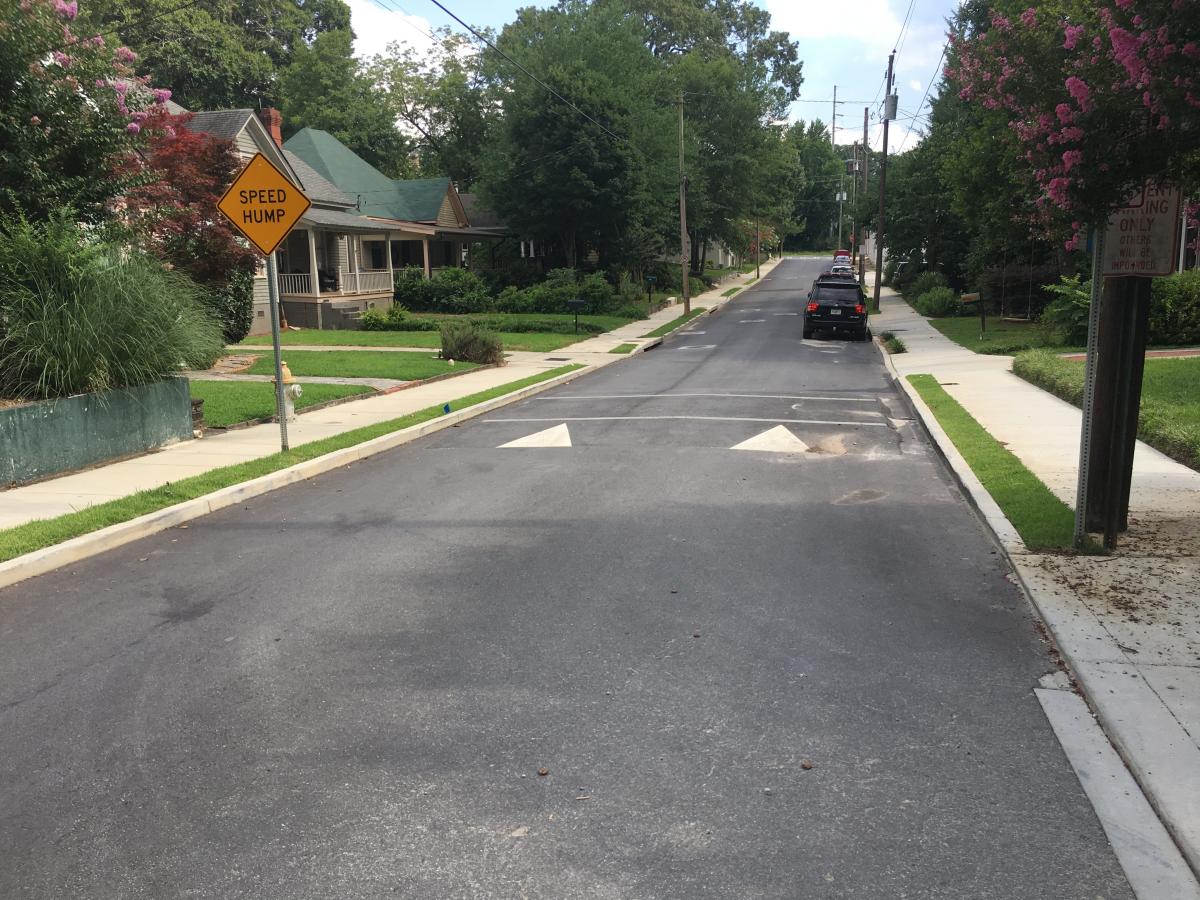Traffic Calming

Traffic Calming is a strategy used along local, residential streets to reduce traffic speeds and accidents, creating safer, more pleasant streets for pedestrians, cyclists, and motorists. Traffic calming can incorporate both non-physical and physical strategies to cue drivers that appropriate residential driving behavior is expected along the City’s neighborhood street network. Traffic calming does not guarantee a reduction in vehicle volumes on residential streets.
What streets qualify for traffic calming?
The City only accepts requests for streets classified as local, residential streets. Urban core, urban, and suburban street typologies are excluded from the traffic calming program. A resident, neighborhood group, or Homeowners Association may submit a request for the City to investigate speeding or safety concerns. To request traffic calming for your street/neighborhood, email trafficcalming@decaturga.com
What are the steps for implementing traffic calming for my street/neighborhood?
-
Submit Request
-
Speed & Volume Study and Field Visit
- City staff will conduct a speed and volume study and conduct a field visit to assess corridor characteristics.
-
Neighborhood Meeting
- City staff will meet with the residents to review neighborhood concerns, discuss the speed and volume results, and determine next steps.
- If the speed and volume study results DO meet at least one of the program thresholds, then education, enforcement, and engineering strategies will be considered. A petition is not needed when the speed and volume results meet the program thresholds.
- If the speed and volume results DO NOT meet at least one of the program thresholds, education and enforcement strategies will be considered. In order for engineering strategies to be considered, a petition with at least 75 percent support of residents within the impacted area must be submitted.
- Program Thresholds:
- Speed - the 85th percentile of speed must be ≥ 5 mph over the posted speed
- Volume - the average vehicles per day must be ≥ 1,000 vehicles
-
Traffic Calming Strategy
- A traffic calming strategy will be developed for the corridor. Depending on the results of the speed and volume study, the traffic calming strategy may include a combination of education, enforcement, and/or engineering tools.
-
Project Implementation
- Projects are scored based on Safe Routes to School routes, pedestrian activity, speed, and volume to determine priority and are implemented by highest priority first, per available funding. If a project is not implemented, it will remain on the list until funding is available.
- Streets identified as urban core, urban, and suburban are eligible for operational improvements such as signal timing, striping, and sign upgrades as well as complete street projects. Complete street implementation (infrastructure improvements for all modes including motorists, pedestrians, cyclists, and transit riders) of these corridors will need to go through a larger master planning and public involvement process.


